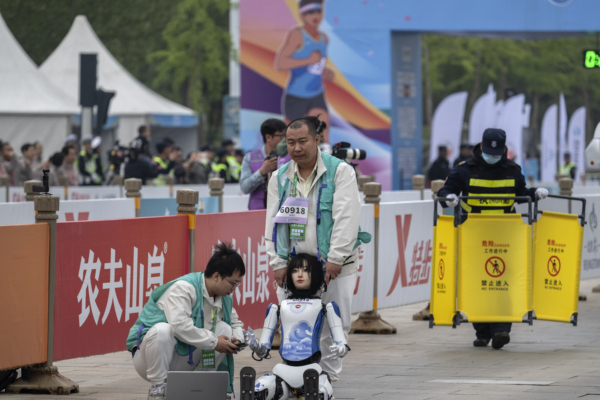Recent reports from 75 A-share and Hong Kong-listed companies in the field of robotics in China have revealed the challenging situation faced by the industry amidst economic downturn and intense market competition in 2024.
China categorizes robots into three types: industrial robots, service robots, and special robots. Currently, there are 7 whole machine enterprises, 21 component enterprises, and 25 integration application enterprises in the industrial robotics sector; 17 service robotics and AI enterprises; and 5 special robotics enterprises.
The annual reports released by Chinese listed robotics companies for 2024 indicate that out of the 7 listed companies in the field of industrial robot manufacturing, only 2 were profitable, while the other 5 were in a loss-making state.
Companies like Esun and Effort saw their performance decline significantly due to deep ties with the photovoltaic industry, with Esun’s net profit plummeting by 700.14% to a loss of 810 million yuan, and Effort incurring a loss of 157 million yuan, a drop of 231.22% compared to the previous year. Even the leading company, Hikvision Technology, saw a 9.62% decrease in net profit.
Among the component companies, 5 experienced declines in both revenue and net profit, with Hechuan Technology’s net profit dropping by 408.27% to a loss of 165 million yuan, mainly due to reduced demand in the photovoltaic industry.
In the integration application sector, 14 companies saw declines in both revenue and net profit, with 7 companies experiencing a single decline. Companies like Tosda, Hanchuan Intelligent, and Liyuan Heng saw a drastic drop in net profit of over 300% to 1200%, with Hanchuan Intelligent’s net profit plummeting by 1204.76% to a loss of 1.103 billion yuan; Liyuan Heng reported a loss of 1.044 billion yuan, a decrease of 455.34% compared to the previous year.
Among the service robotics and AI companies, 6 were in a loss-making state. Humanoid robot company U-best posted a loss of 1.16 billion yuan, although it narrowed by 8.3% compared to the previous year. Its stock price also dropped by nearly 80% from its historical peak, leading to over 100 billion Hong Kong dollars in market value evaporation, raising doubts about its business closure capability.
Furthermore, Grayling Deep Pupil had the largest decline in net profit, with a decrease of 134.24% to a loss of 2.12 billion yuan. Yuntian Lifei’s losses further expanded, with net profit declining by 51.14%, reflecting the industry’s contradiction between high growth and low profitability.
Among the listed companies specializing in special robots, 3 were in a loss-making state. Yijiahe’s net profit dropped by 2069.04% to a loss of 218 million yuan.
According to reports from Sina Finance, the Chinese industrial robot market in 2024 continued the trend of insufficient demand seen in 2023, mainly due to intensified declines in industries such as automotive, photovoltaic, and lithium batteries, along with price wars leading to compressed profit margins.

